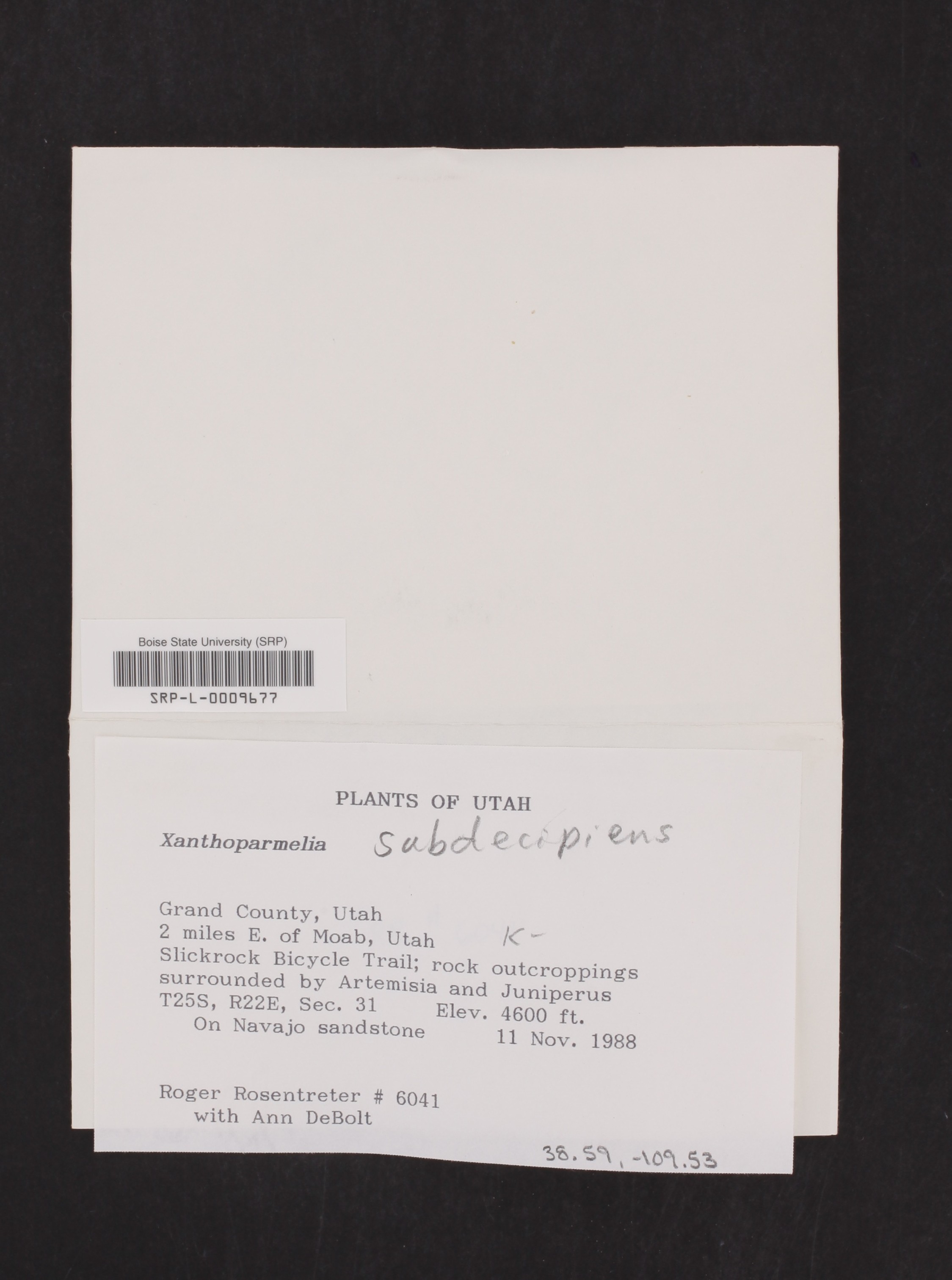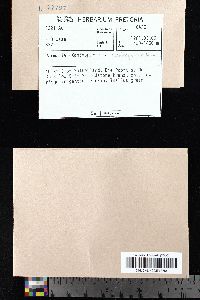
Consortium of Lichen Herbaria
- building a Global Consortium of Bryophytes and Lichens as keystones of cryptobiotic communities -
- Home
- Search
- Images
- Species Checklists
- US States: O-Z >
- US National Parks
- Central America
- South America
- US National Parks
- Southern Subpolar Region
|
|
|
|
Family: Parmeliaceae
[Parmelia subdecipiens Vain.] |
Nash, T.H., Ryan, B.D., Gries, C., Bungartz, F., (eds.) 2004. Lichen Flora of the Greater Sonoran Desert Region. Vol 2. Thallus: foliose, adnate to loosely adnate, 4-20 cm in diam., irregularly lobate lobes: subirregular, elongate, plane to subconvex, separate and contiguous, 1-3 mm wide, not lobulate; apices: subrotund, smooth to crenate, eciliate upper surface: yellow to yellow-green, smooth but becoming strongly rugose with age, dull to slightly shiny, epruinose and emaculate, without soralia, isidia, or pustulae medulla: white, with continuous algal layer lower surface: pale to medium brown, plane, sparsely rhizinate; rhizines: pale brown, simple, 0.2-0.5 mm long Apothecia: common, substipitate, 2-5 mm wide, laminal on thallus; disc: cinnamon-brown to dark brown; margin: smooth, pruina absent asci: clavate, 8-spored ascospores: simple, ellipsoid, hyaline, 10-12 x 6-7 µm Pycnidia: common, immersed conidia: bifusiform, 5-6 x 1 µm Spot tests: upper cortex K-, C-, KC-, P-; medulla K-, C-, KC-, P- Secondary metabolites: upper cortex with usnic acid (major), atranorin (major or minor); medulla with dehydroconstipatic and subdecipienic acids (major), constipatic acid, protoconstipatic, protodehydroconstipatic, protosubdecipienic, ±myelochroic and ±isomyelochroic acids (all minor). Substrate and ecology: on acidic rocks, often in open or partially shaded habitats World distribution: North America and southern Africa Sonoran distribution: rare at intermediate elevations in Arizona and southern California. Notes: Xanthoparmelia subdecipiens is morphologically very similar to X. lineola, but differs in being more loosely adnate and in containing a chemosyndrome of fatty acids in the medulla rather than salazinic acid. Although rare in montane habitats in Arizona, it is more common in the central Rocky Mountains, where habitat segregation from X. lineola has been demonstrated (Benedict and Nash 1990). Xanthoparmelia subdecipiens is a much larger species than X. oleosa, which has the same fatty acid chemistry. |
Powered by Symbiota


















